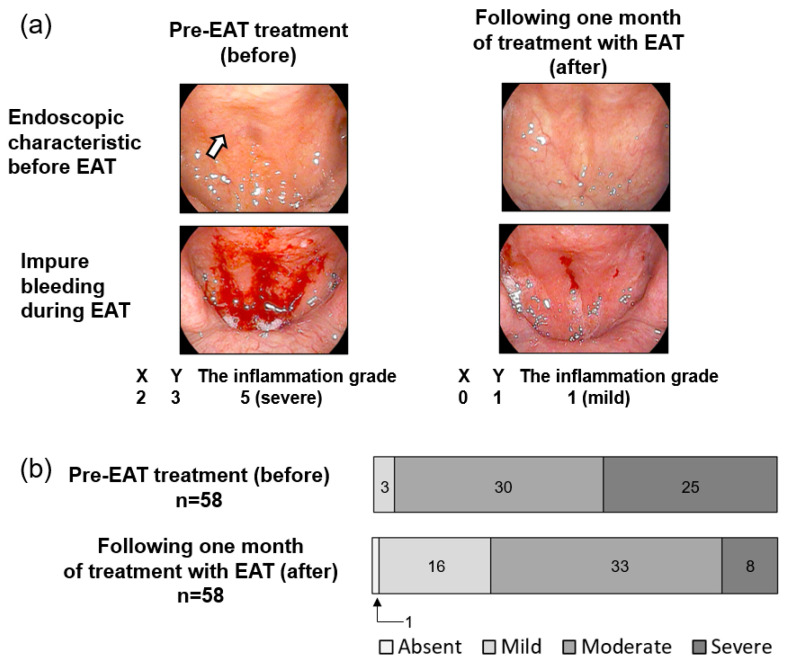Figure 3.
Effect of epipharyngeal abrasive therapy (EAT) for the treatment of chronic epipharyngitis. (a) Trans-nasal endoscopic photographs of the epipharynx in a patient. Left panel shows the epipharynx pre-EAT treatment (before). Right panel shows the epipharynx following one month of treatment with EAT (after). The white arrow indicates cobblestone-like granular changes. The inflammation grade = (X) the score of inflammation due to endoscopic characteristic + (Y) the score of impure bleeding. (b) Changes in inflammation grade due to EAT. All patients were treated with EAT once a week. The upper panel shows the inflammation grade at the first visit. The lower panel shows the inflammation grade following one month of treatment with EAT. The inflammation grade of chronic epipharyngitis was scored on a scale of 0–6 (0: absent, 1–2: mild inflammation, 3–4: moderate inflammation, 5–6: severe inflammation).

